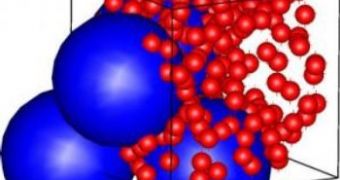Colloids have been used for over 3,000 years, since the invention of ink, but only recently have scientist been able to decipher some of their unique properties. They are heterogeneous mixtures made of tiny particles or droplets that visually appear to be homogeneous solutions, meaning that they are in fact a mixture of two phases that look like only one phase.
Athanassios Panagiotopoulos, the Susan Dod Brown Professor of Chemical Engineering at Princeton, and postdoctoral research associate Antti-Pekka Hynninen have been able to solve a fundamental problem involving colloids that could have various practical applications, from medicines to new optical fibers.
Until now, scientists have not been able to detect the conditions under which colloids will exist in the solid, liquid and gas states. They tried doing that with computer simulations, which they thought would help them understand colloidal properties.
That's because colloids are made of large numbers of charged particles that attract and repel each other in very unusual ways, making it difficult to predict a general behavior for the entire substance, especially when the particles had very high static electric charges, which commonly occurs in practical situations.
The engineers at Princeton have realized that they could represent the entire system with high accuracy using just one to four colloidal particles and their oppositely charged counterparts, called counterions.
So, they've come up with a complete phase diagram that applies even to particles having high electric charges.
"This is the closure of a long-standing, fundamental problem in statistical mechanics," said Panagiotopoulos, who admits that Hynninen had the "elegant and powerful idea" to take into consideration only a very small part of the colloidal system.
The new and improved calculation method may lead to more effective processes for manufacturing artificial opal crystals, which, due to the unique way in which they diffract optical signals, are essential for high-speed transmission of data in optical fibers.

 14 DAY TRIAL //
14 DAY TRIAL //